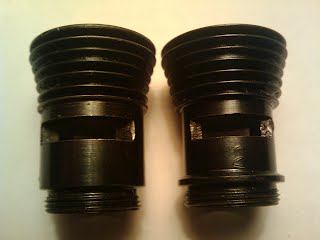Log in
Search
Latest topics
» My N-1R build logby roddie Yesterday at 9:29 pm
» Funny what you find when you go looking
by rsv1cox Yesterday at 3:21 pm
» Landing-gear tips
by 1975 control line guy Yesterday at 8:17 am
» Purchased the last of any bult engines from Ken Enya
by sosam117 Yesterday at 7:45 am
» Cox NaBOO - Just in time for Halloween
by rsv1cox Tue Nov 19, 2024 6:35 pm
» Canada Post strike - We are still shipping :)
by Cox International Tue Nov 19, 2024 12:01 pm
» Duende V model from RC Model magazine 1983.
by getback Tue Nov 19, 2024 6:08 am
» My current avatar photo
by roddie Mon Nov 18, 2024 9:05 pm
» My latest doodle...
by TD ABUSER Mon Nov 18, 2024 11:30 am
» Brushless motors?
by rsv1cox Sun Nov 17, 2024 6:40 pm
» Free Flight Radio Assist
by rdw777 Sun Nov 17, 2024 6:03 pm
» Tribute Shoestring build
by amurphy6812 Sun Nov 17, 2024 5:43 pm
Cox Engine of The Month
Choosing a cylinder for an engine is not always that easy that is if you are looking for performance.
Here is a chart of Cox cylinders and their numbers.
(These are all .049/.051 cylinders)
Porting Examples
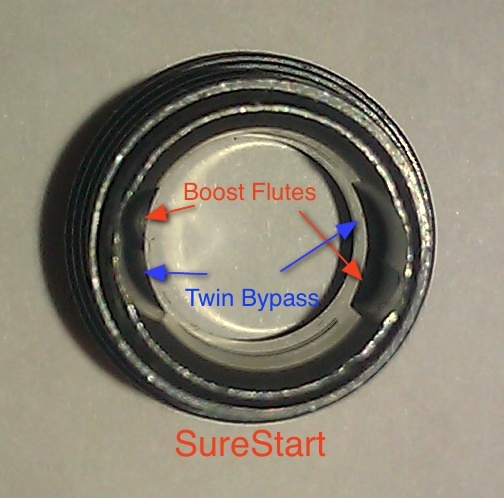

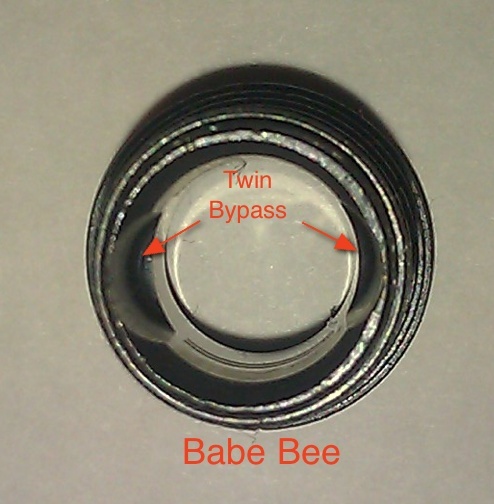
Cylinder Style Examples

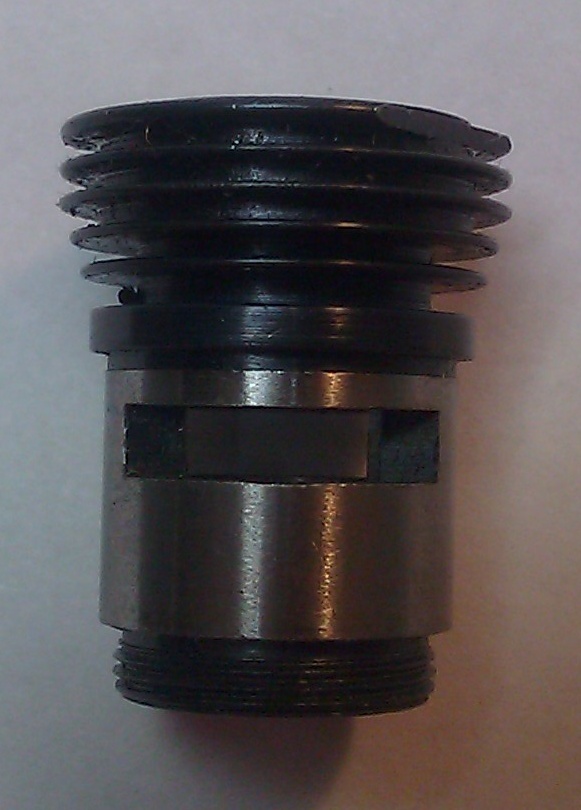
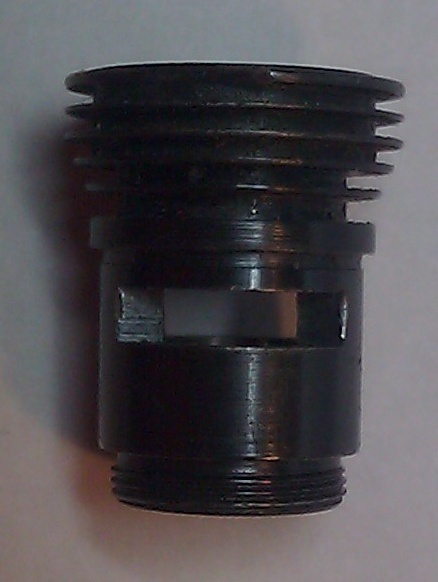

From top to bottom, left to right.
[SureStart slit cylinder], [#7 open exhaust cylinder, ground for use with muffler, throttle muffler or throttle ring], [Black Widow open exhaust cylinder],
[step cylinder and throttle ring, cylinder ground for better fit of throttle ring]
If you spot any issues at all on this list, PLEASE let me know! It would really help!
Here is a chart of Cox cylinders and their numbers.
(These are all .049/.051 cylinders)
| Number |
Description |
| 1 | Used on early Black Widow and 290-291 series engines. 2 bypass, sub-piston induction, some cylinders had milled top fins and some older ones didn't. |
| 2 | Used on Golden Bee and older Babe Bee engines. Single bypass, sub-piston induction, top fin not milled. |
| 3 | This number was used on lots of different cylinders. The Venom used a #3 (or 4, see below) cylinder that was 2 bypass, 1 booster, sub-piston induction, tapered, top fin milled. |
| 4 | Used on T.D. .049 engines. 2 bypass, 2 booster on each bypass, each with 3 separate milling cuts, sub-piston induction, top fin milled, has tapered grind. Sometime in the 1980s, TD cylinders were no longer tapered. This number has also been seen on the Venom .049 which is a 2 bypass, 1 booster, sub-piston induction, tapered, top fin milled. |
| 5 | Used on T.D. .051 engine. 2 bypass, 2 booster on each bypass, each with 3 separate milling cuts, sub-piston induction, top fin milled, has tapered grind. |
| 6 |
Used on QZ and QRC and seen on some Sure Start engines. 2 bypass, no sub-piston induction, top fin milled. NOTE: The Sure Start cylinder had a twin slit exhaust, 1 booster on each bypass and no SPI |
| 7 | Used on many engines: product engines, car engines, Sure Start engines, Single bypass, sub-piston induction, top fin milled. (Sure Start had 1 boost port on each bypass) |
| 8 | Product engines and car engines. single bypass, narrow exhaust, no sub-piston induction, top fin not milled. |
| 9 |
Very rare, not much known, seen on some product engines |
| 0 | Used on product engines, 2 bypass, no sub-piston induction, top fin milled. |
| P-40 | Used on the "Super Bee" .049 engine, came on the ready-to-fly P-40 planes 1959 through 1961. 2 bypass, sub-piston induction, top fin not milled. |
| Slit Cylinders |
Description (note: some engines such as Black Widow, QRC, Medallion... had slit cylinders on later models) |
| Sure Start |
2 bypass ports, 1 boost port on each bypass, top fin milled, no SPI |
| Babe Bee |
2 bypass ports, top fin milled, no SPI |
| Texaco |
2 bypass, 1 boost port on each bypass, top fin milled , no SPI |
| Killer Bee ('92-'01) |
(.049/.051) 2 bypass, 1 boost port on each bypass, top fin milled, has SPI, has tapered grind. |
| Killer Bee (post '02) |
2 bypass, 1 boost port on each bypass, top fin milled, has NO SPI, no tapered grind. |
| Medallion |
2 bypass, 1 boost port on each bypass, top fin milled. no SPI (RC version ground for use with throttle ring) |
| NFFS Medallion .051 |
.051, 2 bypass, 1 boost port on each bypass, top fin milled, no SPI |
| Dragonfly |
2 bypass, 1 boost port on each bypass, top fin milled no SPI |
| RC Bee |
2 bypass ports, top fin milled, no SPI (ground for use with throttle muffler) |
| QRC |
2 bypass, top fin milled, no SPI |
| Cast Crank Sure Start |
2 bypass, 1 boost port on each bypass, top fin milled, no SPI |
| Black Widow |
2 bypass, 1 boost port on each bypass, top fin milled, no SPI |
| Early Engine Cylinders (No Number) |
Description |
| Space Bug |
2 bypass, open exhaust, has SPI, top fin not milled |
| Space Bug Jr. |
1 bypass, open exhaust, has SPI, top fin not milled |
| Thermal Hopper |
2 bypass, open exhaust, has SPI, top fin not milled |
| Strato Bug |
2 bypass, open exhaust, has SPI, top fin not milled |
| Space Hopper |
2 bypass, open exhaust, has SPI, top fin not milled |
| Babe Bee ('56,'57) |
1 bypass, open exhaust, has SPI (may appear to have very little to no SPI depending on piston type), top fin not milled |
| Golden Bee ('57) |
1 bypass, open exhaust, no SPI (may appear to have very little SPI if the piston and con rod connection is loose), top fin not milled |
| RR-1 ('57) |
2 bypass, open exhaust, has SPI, top fin not milled |
Porting Examples



Cylinder Style Examples




From top to bottom, left to right.
[SureStart slit cylinder], [#7 open exhaust cylinder, ground for use with muffler, throttle muffler or throttle ring], [Black Widow open exhaust cylinder],
[step cylinder and throttle ring, cylinder ground for better fit of throttle ring]
Thinner style cylinders can be found on engines made before the 1970s. They can run much cooler due to their thin walls. But can be damaged more easily when removing/replacing or in a crash.
They are both #2 cylinders, the one on the left (the average one) is off a 1978 Babe Bee and the one on the right (the thin one) is off a 1962 Babe Bee.
Non .049/.051 Cylinders
(coming soon)
In Feb of 1956, Cox switched over from the small diameter cylinder/head threads to the current size.
They are both #2 cylinders, the one on the left (the average one) is off a 1978 Babe Bee and the one on the right (the thin one) is off a 1962 Babe Bee.
Non .049/.051 Cylinders
(coming soon)
| Tee Dee .010 |
|
| Tee Dee .020 |
|
| Pee Wee .020 |
2 bypass ports, open exhaust, top fin may or may not be milled depending on age, may or may not have SPI |
| Tee Dee R/C .050 |
|
| Queen Bee .074 |
|
| Tee Dee .09 |
|
| Tee Dee .15 |
2 bypass, 2 booster on each bypass, each with 3 separate milling cuts sub-piston induction |
| Special .15 |
|
| Special MkII .15 |
In Feb of 1956, Cox switched over from the small diameter cylinder/head threads to the current size.
If you spot any issues at all on this list, PLEASE let me know! It would really help!


 Rules
Rules









